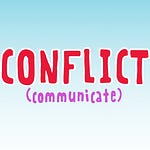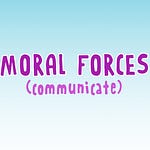Abbie: Hello and welcome to the CosmoParenting Podcast brought to you by the CMM Institute for Personal and Social Evolution. In this space, we invite you to see yourself as someone who is curious about and actively participating in creating your own meaning around parenting.
This is our ‘Animate’ episode, where we offer some strategies to integrate into parenting so you can bring to life the things we talk about here on the podcast. Let’s begin.
*music*
Abbie: Today, I am joined once again by gifted educator Stephanie Higgs, to offer us a best practice from a teacher’s perspective. Hello, Stephanie.
Stephanie: Hey, Abbie.
Abbie: So, Stephanie, this month has been all about moral forces. What is the practice that you are offering us today around moral forces?
Stephanie: A ‘Heart Map’ is a great tool to use with kids of any age. Obviously, the product will look different depending on the age of the child. But I want you to think about a heart map almost like a vision board. This is a way for a kid to visualize and map out the makeup of their heart. So, for an older kid this could look like fractions and percentages. What fills their heart? Is it 10% love of friends, and 20% love of video games, and 30% a love of the family pet. And so on and so forth. For a young child, this may be drawing a heart on a piece of paper and having them illustrate the things that fill up their heart.
Going back to the example from earlier this month, involving the moral conundrum of expressing individuality versus wondering what others will think, a ‘Heart Map’ can help you discern how much emotional investment to spend in this stand-off. If your toddler loves, values, and prioritizes autonomy and opportunities to shine and do things in creative, unique, and individual ways that other kids their age aren’t thinking about, perhaps you start to envision what their ‘Heart Map’ looks like.
While they may have simply been able to create a quick scribble filled with puppy dogs and parents, you as the caregiver, can start to envision a more evolved version of their ‘Heart Map’ and you might be able to see that your kiddo really values and prioritizes individual expression. This might cause you to reflect on your own ‘Heart Map’ and ask yourself: is this a battle that I am willing to choose? Morally, which of these two forces mean more to me and is more impactful to my family? Do I need the family to look put together because my spouse is the mayor and we are going to an event? Or are we going to the park to play and it’s okay if we are wearing our cowboy boots and a tutu or our pj top?
So where do we want to spend that emotional investment based on what my heart map looks like? What do each of your family member’s ‘Heart Maps’ look like, and where and when are the times when one takes priority over the other? Or can we find places and times for many of us to shine?
Abbie: Stephanie, yes. This one is so good. And it seems like a practice you might be tempted to dismiss if you are older than- I don’t know- 10 years old, but I would really encourage adults who are parenting to take the time to think about their ‘Heart Maps’ and their kids’ ‘Heart Maps’ for all the reasons you just shared. You know- it’s not just a cute little art project or a cute little craft, because with real reflection, you can learn a lot about your priorities and how they align with or bump up against your kids’.
And, like we already talked about, relationships are co-created and so it’s really important to make space for and pay attention to both or all of the ‘hearts’ that are involved in the relationships. This is the whole idea I think behind moral forces, too- having an understanding of your why is what it’s really about for me (or better yet your “whys” plural) your many reasons for acting how you do. And like with the patterns theme- I’ll make another connection back to that- that it’s about becoming aware of your patterns and then deciding if you want to change them. This is kind of similar to that if you can become aware of your priorities, then you can decide which ones you want to alter and you can act differently in different situations and kind of be reminded that you have some choices there.
So, Stephanie, thanks so much for joining us again! And to everyone listening thank you for joining us as well. You can connect with Stephanie on Instagram @littlemissgifted and you can check out our other CosmoActivities and additional resources at www.cosmoactivities.com. We are so grateful to be on this journey with all of you. And we will see you next week for the final episode of the month where we will talk communication on the theme of moral forces.
*music*












Share this post